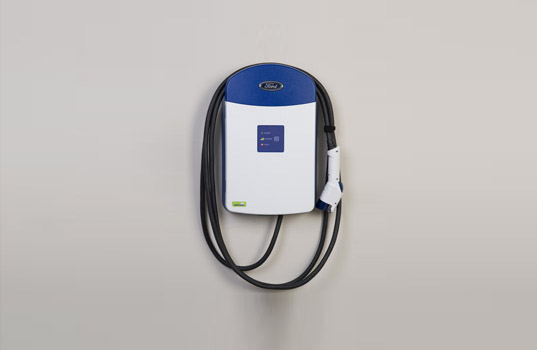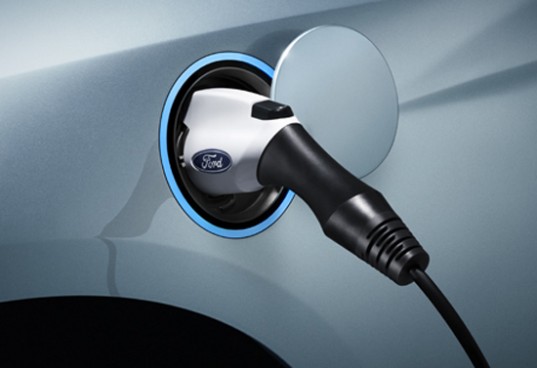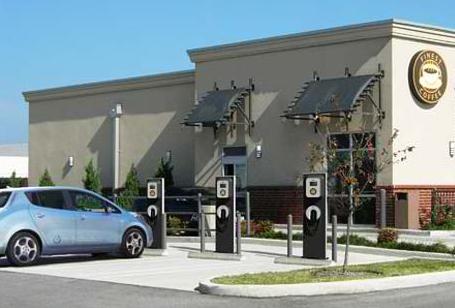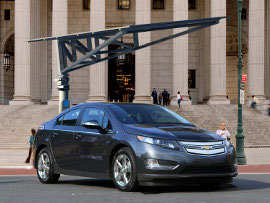IKEA, the world’s leading home furnishings retailer, today announced a partnership with ECOtality, Inc. (NASDAQ:ECTY), a leader in clean electric transportation and storage technologies, to host Blink electric vehicle charging stations at select IKEA stores in the Western United States. IKEA locations being considered for hosting the charging stations include 10 stores in Arizona, California, Oregon, and Washington. These sites will be evaluated for feasibility and installation needs; operational charging stations could be available as early as Fall 2011. This initiative represents the first project of its kind for IKEA.
Coulomb Technologies today is demonstrating a way to locate public charging stations for electric vehicles through the TomTom car navigation systems. The application will let drivers find and reserve the nearest available Coulomb charging site, as well as get details on each location, such as the cost, charge rate, and connector type.
Coulomb, which is one of the major players in EV charging sites, declined to say when the product will be available. It does intend to integrate with other car navigation systems, according to a representative. The TomTom application is being shown this week at the Plug-In 2011 electric vehicle conference in Raleigh, N.C.
Ford Focus Electric owners can now charge up their vehicles without leaving their homes! In a partnership with Leviton and Best Buy, consumers will be able to purchase their own in-home charging stations for personal use. The cool and compact charging station was recently introduced at Ford’s booth at CES 2011.

The tiny charging station is about the size of a backpack, and currently runs for about $1,500 at Best Buy. Easy to install, each station comes with the assistance of Best Buy’s Geek Squad, who provides service from sale to installation. The 240-volt system should not interfere with typical home electric wiring, but if so, the Geek Squad will work out any issues, in addition to any servicing and repairs required. Small and sleek, the system hooks into an outlet instead of having to be hard-wired into a circuit breaker. The bright blue and white unit attaches to the vehicle via a simple cord and small plug.

Linked in with the car’s 6.6 kilowatt charger, Ford Focus Electric owners can fully charge their vehicles at home in three to four hours — this is half the charge time of their competitor the Nissan Leaf. Charging at home also saves consumers cash, avoiding the issue of over-charging at public commercial charging stations.
Source: inhabitat
With EVs increasing in popularity thanks to steadily rising gas prices, businesses are flocking to cash in on the budding electric revolution. While many gas stations are installing Level 3 (440V) express charge stations to allow consumers a quick “stop and go” experience, Level 2 (240V) stations seem to be more common in shopping malls and public centers since people tend to spend more time parked in one location. SAE J1772-compatible Level 2 charging stations are the most widely used, seeing that the technology serves a wide variety of EV/plug-in hybrid models available today – like the Nissan LEAF, Chevy Volt, and Tesla Roadster, to name a few. Level 3 stations only take about 30 minutes to reach a full charge, while Level 2 takes up to roughly 8 hours if the battery is fully drained.

For longer trips along routes where the EV charging infrastructure has not yet been established, there are companies like U.S.-based Better Place that offer consumers the option of exchanging their old battery out for a new, fully-charged one. For those still worried that purchasing an electric car isn’t feasible with today’s insufficient charging options, rest assured that the U.S. government is working to handle that by offering Recovery Act funds to companies looking to develop such an infrastructure. ECOtality, for one, has been given over $230 million toward the installation of their Blink Level 2 stations in 16 cities throughout the U.S. AeroVironment is yet another company currently in the works with Oregon’s Department of Transportation (DOT) to install an undisclosed amount of Level 3 chargers between the California/Oregon state border and the Willamette Valley off the I-5 freeway. Ultimately, AeroVironment will develop charging stations along the busiest areas of the I-5 corridor running from San Diego to Northern Washington. The way things are progressing (despite obvious opposition), it seems like only a matter of time until EVs become the standard mode of transportation in America.
Source: renewable-energy
Envision Solar International Inc. (San Diego, California, U.S.) announced that it has completed the design, engineering and fabrication of its first Socket station, a combined solar electrical vehicle (EV) charging station and shade structure for one vehicle.
The structure is a smaller version of the company’s SolarTree canopy, and will be shipped to a site in northern California for installation in July 2011.

“With this development and our other offerings we believe we have established new archetypes for the renewable energy and building industries: “smart” solar integrated infrastructure and building systems, which have a range of sizes and outputs for every need, and include tracking, integral EV charging, energy management and shade,” states Envision Solar CEO Robert Noble.
“And of course we focus on superior aesthetics in every way. These solar energy generation offerings, as they are built, become an extremely important component of the urban fabric we live, work and play in.”
System to provide energy for a full EV charge daily
The Socket system includes EnvisionTrack tracking technology, and one vehicle charging hookup. The capacity of each Socket is 1.44kW when using 240 watt modules, and the company states that the system provides enough energy each day for a full charge for an electric vehicle or plug-in hybrid.
The first prototype Socket was announced and demonstrated at the California Center for Sustainable Energy in San Diego, California, in October 2010.
Envision notes that the announcement is concurrent with the presentation of the 2011 GM Volt for public viewing and test drives.
 Follow
Follow